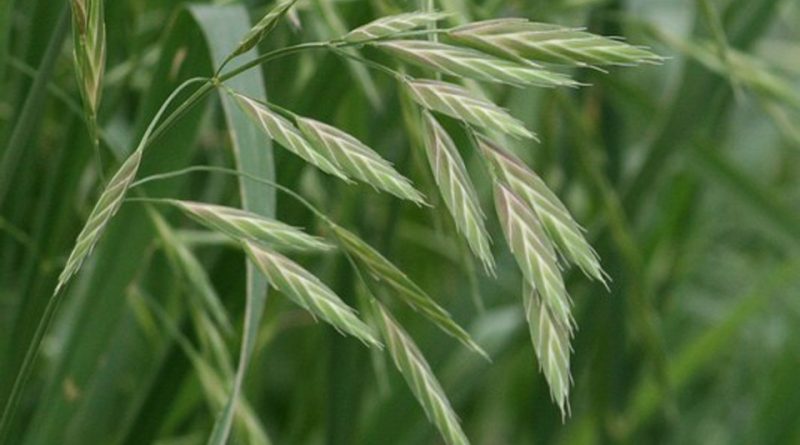Bromus catharticus
Bromus catharticus
Rescuegrass (Bromus catharticus Vahl) is a herbaceous species belonging to the Poaceae family.
Systematics –
From the systematic point of view it belongs to the Eukaryota Domain, Kingdom Plantae, Sub-Trinchebionta, Superdivision Spermatophyta, Division Magnoliophyta, Class Liliopsida, Subclass Commelinidae, Order Cyperales, Family Poaceae and therefore to the Genus Bromus and to the Species B. catharticus.
They are synonyms: Bromus angustatus Pilg., Bromus bolivianus Renvoize, Bromus breviaristatus (Hook.) Thurb., Bromus brongniartii Kunth and Bromus willdenowii Kunth ..
Etymology –
The term Bromus comes from the Greek βρῶμα broma food, nourishment: a name that Theophrastus already attributed to a dietary grass. The specific epithet catharticus is of Greek derivation and comes from καθαρός pure katharòs: which makes it pure, therefore purgative, purgative.
Geographical Distribution and Habitat –
Rescuegrass is a grass native to South America, especially the Andean areas and Uruguay) and is widespread in Argentina, North America, Australia and Europe where it was introduced later.
The typical habitat of the Bromus catharticus is that of the prairies and open areas.
Description –
Rescuegrass is a three-year high-sized herbaceous species that can reach an average of 70-150 cm, with a powerful root system from which erect, flattened culmates with rich leaves branch off; these are provided with elongated ligules and without orecchiette.
The inflorescences are panniculus with rather large and flattened seeds (the weight of 1000 seeds is 7 g).
The upper spikelets are erect and the lower spikelets are drooping. Each spikelet is 20-40 mm long and has four to twelve flowers.
This species is one of the few meadow grasses with self-pollinating pollination.
Cultivation –
Rescuegrass is a grass suitable for mild climates, in Italy it was also cultivated with good yields, similar to those of Festuca arundinacea.
This species also has good elasticity of use, earliness, easy cultivation in many soil conditions, resistance to drought, good aptitude for self-seeding which greatly prolongs the duration of the crop, good quality and excellent palatability of the forage.
These are interesting qualities for the medium-fertile soils of the central-southern regions, both in pure cultivation for mowing but less for grazing, given its sensitivity to trampling, and in combination with alfalfa.
Uses and Traditions –
Of the Bromus catharticus there are some varieties among which we include: the “Cabro”, the “Jeronimo” and some French cultivars, such as the “Luprime” and the “Meribel”.
It is a grass that has good ability to supply fodder after severe droughts or harsh winters.
The negative aspects are linked to its mediocre resistance to cold, the great needs in nitrogen, the poor adaptability to asphyxiated soils and the sensitivity to coal (Ustilago bullata), which however can be overcome by adopting resistant varieties.
Preparation Mode –
The rescuegrass finds application for forage cultivation but there are no references and news on possible uses for human nutrition and for pharmaceutical purposes.
Guido Bissanti
Sources
– Acta Plantarum – Flora of Italian Regions – Wikipedia, the free encyclopedia – Treben M., 2000. Health from the Pharmacy of the Lord, Advice and experiences with medicinal herbs, Ennsthaler Publisher – Pignatti S., 1982. Flora d ‘Italy, Edagricole, Bologna. – Conti F., Abbate G., Alessandrini A., Blasi C. (edited by), 2005. An annotated checklist of the Italian vascular flora, Palombi Editore.
Attention: Pharmaceutical applications and food uses are indicated for informational purposes only, do not in any way represent a medical prescription; therefore no responsibility is assumed for their use for curative, aesthetic or food purposes.


